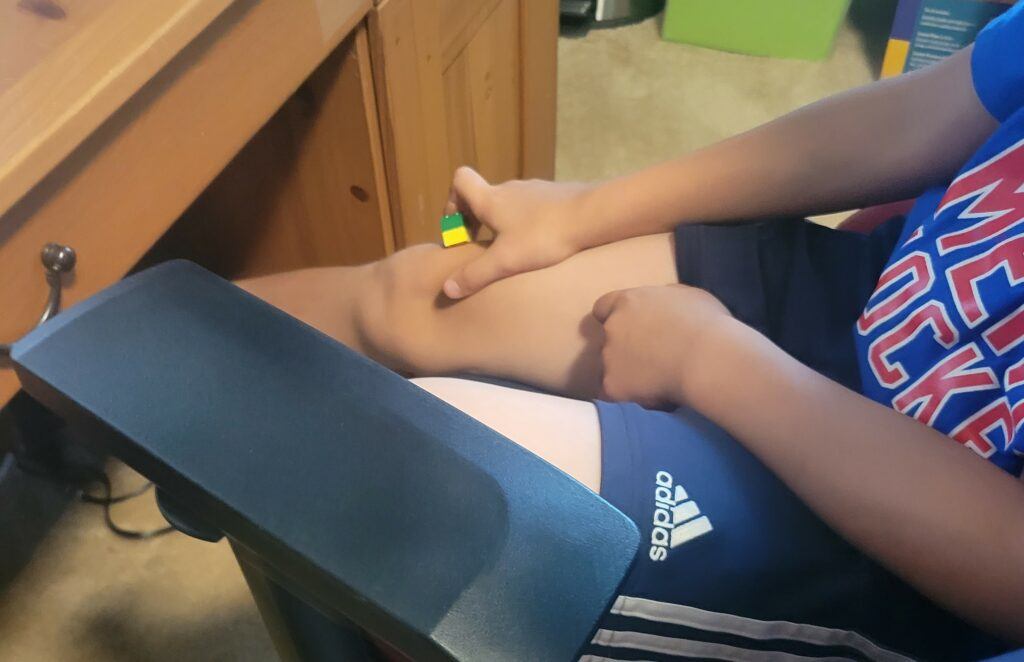Imagine all these Lego® bricks, plates, and other parts right in front of you. If you’re a Lego® person, just looking at these pieces and parts might cause you to start drooling just thinking about their infinite creation possibilities. Now, if you’re a sensory person, all these bricks and parts become more than infinite building possibilities. They are both complex and simple at the same time in their color palate, shape feel, and sounds as they are jostled about. Lego® becomes something else entirely different to the sensory person.

Sample of a Lego® table from The BrickLab. Check out all the The BrickLab has to offer at thebricklab.com.
What we know about the brain.
When you think about it, our brain is pretty much responsible for everything around us. It is the foundation behind creating almost all of the things we use and do on a daily basis. Our brain has also named all the things in our world including the device you are reading this on, Lego®, and even itself. That’s fun to think about.
This truly marvelous organ that runs our show begins its development very early on in life. At around three weeks after conception some cells begin to differentiate into brain cells, and then by twenty-six weeks the brain and spinal cord are developed. Brain growth occurs rapidly within the first year or so of life, and then continues to develop up through the next twenty-five years. Within that time frame, brain cells continue to grow and die, and neural connections are made or not.

Just as plants need water, sunlight, and a proper medium for growth, our brain requires more than just a cranium to sit in if it is to properly grow and develop. We have a saying in Chiropractic: “Movement is Life”. Yes, I’m your friendly neighborhood Chiropractor by day and Lego Dad by night. Movement helps stimulate all critical aspects of physical and physiological growth and development and the brain absolutely benefits from movement. Movement for our brain is a bit different than physically moving one of our arms or legs, as we don’t physically move our brain for exercise. On a very basic level, movement for our brain comes in the form of sensory information received from when a body part interacts with the external (and sometimes internal) environment. Our brain then sends a motor command back to the body part instructing it what to do. Sometimes those motor commands are appropriate for the situation and sometimes those motor commands are not. When the sensory input and motor commands are in sync all good, however when the sensory input and motor commands are out of sync life tends to become a bit more challenging.
A Great Tool!
Over the past few years, a multitude of fidget toys have flooded the market to help satisfy the sensory and motor requirements of the nervous systems of children, and adults alike, with sensory issues thereby allowing them to focus on the task at hand. Lego® parts can be an extremely useful tool if you have that person or child who is a sensory seeker. It is important to keep in mind that not all sensory issues are the same. Some people, like myself, will like the feel of the bricks locking into place, the overall firmness of the bricks and the definiteness of their edges. Other people may not, and that is ok; it’s ultimately about finding the appropriate tool for that individual’s needs.
If you have that sensory seeker at home start by giving them a few bricks, two or three, when they have to perform a task such as reading or writing. You may find that initially they may be a tiny bit distracted but soon the novelty of the Lego® will wear off and then they will refocus to the task at hand. This may not work so well for younger children as they have a tendency to misplace, drop, throw, lose (you get the idea) things very easily.


In future posts I’ll have more sensory friendly ideas and share more helpful information as we discuss the many different whys and ways Lego® can be helpful to the sensory person. Just remember our first quarter centry holds so much potential that creating opportunities for the child and young adult to fully explore their environment, with all of their senses, is critical for their future success.

